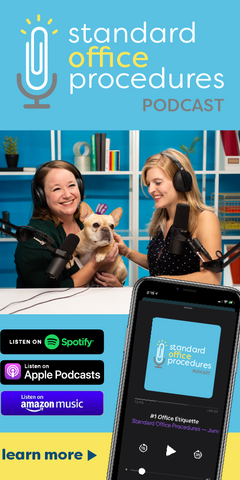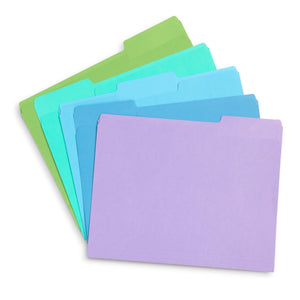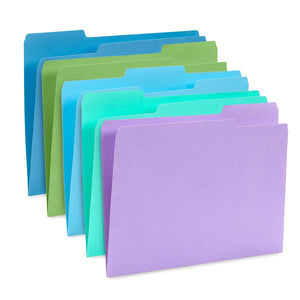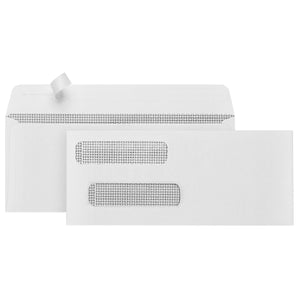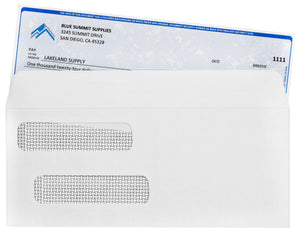There are many different sizes and types of paper. Most people become quite familiar with both construction paper and printer paper as early as kindergarten, but when you’re running a business that needs to print receipts, you’ll have to get to know thermal paper as well. But what is thermal paper? Is it different from other kinds of paper? What is it used for, and where do you buy it?
Don’t worry—stationery is our jam and we’re here to help. So, what is thermal printing paper, what is it made out of, and how does it differ from bond paper?

What is Thermal Paper?
Also sometimes called receipt printing paper, thermal paper is a kind of specialty paper that changes color when it’s exposed to heat, which means it does not require traditional ink.
Thermal paper is manufactured through the application of specially designed heat-sensitive chemical materials to a paper base. The specific mixture of chemical materials and dye will vary depending on the manufacturer.
When thermal paper is heated beyond the melting point, the dye reacts to the chemical materials, causing it to shift its color, usually becoming black, but special coatings can cause it to turn blue or red as well. The print heads in thermal printers are designed to heat the correct areas of the paper, making the text legible.
Thermal paper has a somewhat slick surface; while perfect for thermal printing, it’s not easy to write on thermal paper with a pen or pencil. You may have encountered this if you’ve ever tried to write on a receipt. 🖊
The dye appears with heat, which means dragging your fingernail across a piece of thermal paper may cause a black mark on the surface of the paper due to the friction caused by your nail.
Thermal paper is most often used in thermal printers for devices like cash registers, adding machines, and credit card terminals. Thermal paper size will vary depending on what you need the thermal paper for. Since thermal paper doesn’t depend on traditional ink, you only need to change the thermal paper roll and never need to replace an ink cartridge.
| Paper Size | Dimenions |
|
|
What is Thermal Paper Used For?
Thermal paper is most often used for receipts. Wondering what is a thermal receipt? Unless you write your receipts out by hand, a thermal receipt is most likely just a regular receipt.
Thermal paper may also be used for credit card terminals, cinema tickets, play tickets, hospital records, ATM receipt paper, thermal photo printers, price tags, shipping labels, barcode labels, and more.
What is Receipt Paper Made of?
Let’s get a little technical. Thermal paper has multiple layers. Most commonly, these layers are a substrate layer, a base layer, and an active layer.
The substrate layer is simply the paper, usually made from wood pulp.
The base layer, also known as the pre-coat layer, is the binding element made from a blend of gelatin, starches, and alkali salts that allows the heat to move through the paper. This layer acts like a primer that seals the substrate layer. It fills up every space between the surface fibers, evening out the surface of the paper so that the active thermal coating can stay on. The base layer also stabilizes what’s printed on the paper by activating the dye pigments after printing.
The active coat layer, also known as the thermal coat layer, holds the chemicals and heat-sensitive dye pigments that change color when exposed to heat. This layer is made up of two primary substances: leuco dye crystals and color developers.
Depending on your thermal paper, these substances may be separated by a solid solvent. Alternatively, the dye crystals could be held in a microcapsule. Either way, under the application of heat, the solvent will dissolve or the microcapsule will pop, allowing the dye crystals to react to the color developer, thus creating black imprints on the paper.
Some thermal papers also come with another layer that acts as a protective coating, which fortifies the thermal image against UV light, grease, oil, water, and more.

What is Bond Paper?
Despite the name, bond paper, unfortunately, has nothing in common with the roguish secret agent James Bond.
Bond paper, also known as wood-free paper or printer paper, is a staple of most offices and schools. It’s most commonly used in traditional printing with the use of ink or ink cartridges and works well with both inkjet and laser printers. If you need to print a project for school or a document for work, you’re probably using bond paper. While bond paper size varies, the most common size you’ll find is A4.
Curious about paper sizes? Learn more with our guide: Legal vs. Letter Size and Other Paper Dimensions.
| Pros of Bond Paper | Cons of Bond Paper |
|
|
What is Bond Paper Used For?
Bond paper is used for pretty much everything around the office or classroom. It’s used for printing reports and proposals, resumes and cover letters, contracts, brochures, invoices, invitations, and forms, such as tax forms, financial documents, and job applications. It can also be used for drawings and sketches.
While different types of bond paper can be used in thermal transfer printers with ribbons, it’s time-consuming and isn’t cost-effective when it comes to printing receipts, as you will frequently have to change the ink cartridge.
So while bond paper is ineffective for use as a receipt, it is useful for pretty much everything else.

Want to learn more about regular old bond paper? Check out our sizing articles: Legal vs. Letter Size and Other Paper Dimensions and Types of Paper: Thickness, Dimensions, and More.
Common Receipt Paper Size
Finding the right size of receipt paper is a must; buy the wrong kind, and your POS (Point-of-Sale) receipt printer may not work at all. If you know the model of your receipt printer, you can ask your paper supplier or simply ask Google about the correct size of paper to buy.
If not, you can measure the paper roll by yourself with a ruler, paying careful attention to four key specifications:

Width: The width of a receipt paper roll is across the face of the roll, from one side of the paper to the other. (Standard roll widths are 57mm, 76mm, and 80mm.)

Diameter: The diameter is from edge to edge of the entire paper roll, spanning from the edge of the paper across the spindle hole to the opposite edge. The diameter of the roll will match its total length. The larger the diameter, the longer the roll will be. (Traditional counter-based POS printers require 60mm, 70mm, or 80mm rolls, whereas mobile POS printers require 30mm or 40mm.)

Length: The length is the amount of paper wrapped around the spindle. (The length of a printer roll ranges from 55mm to 83mm.)

Core Size: Core size is the diameter of the tube or spindle on which the receipt paper is rolled. (The most common core size is 12.7mm.)
Paper thickness is another consideration. The thicker the paper, the more durable the receipt will be, but the fewer receipts you’ll be able to print from a single roll.

Where to Buy Receipt Paper
In the market for receipt paper? Check out your local office supplies store to see if you are able to support a local business.
Blue Summit Supplies carries a number of receipt paper options, including bulk packages. Add thermal paper to your next office supplies order to consolidate shipping. Don’t see the size you’re looking for? Let us know!
More From Blue Summit Supplies
💡 Thermal label printers are a convenient and cost-effective solution for printing labels and product information. Here are The Best Thermal and Color Label Printers for Small Businesses.
💡 Printer ink can be a huge budget line for small businesses. Learn about the many Benefits of Using Compatible Printer Ink, including what types are available and what to watch out for.
Do you love stationery as much as we do? Follow our office and school supplies blog for the latest trends, product comparisons, and more.
If you have any questions or want to talk to someone about office supplies, send us an email or connect with us on Twitter, Facebook, or Instagram.
 For more informative articles about office supplies, subscribe to our email newsletter!
For more informative articles about office supplies, subscribe to our email newsletter!
Never fear, you won't begin receiving daily sales emails that belong in a spam folder. Instead, we promise a fun weekly roundup of our latest blog posts and great finds from across the web. And if you lose interest, it's always easy to unsubscribe with a single click.



